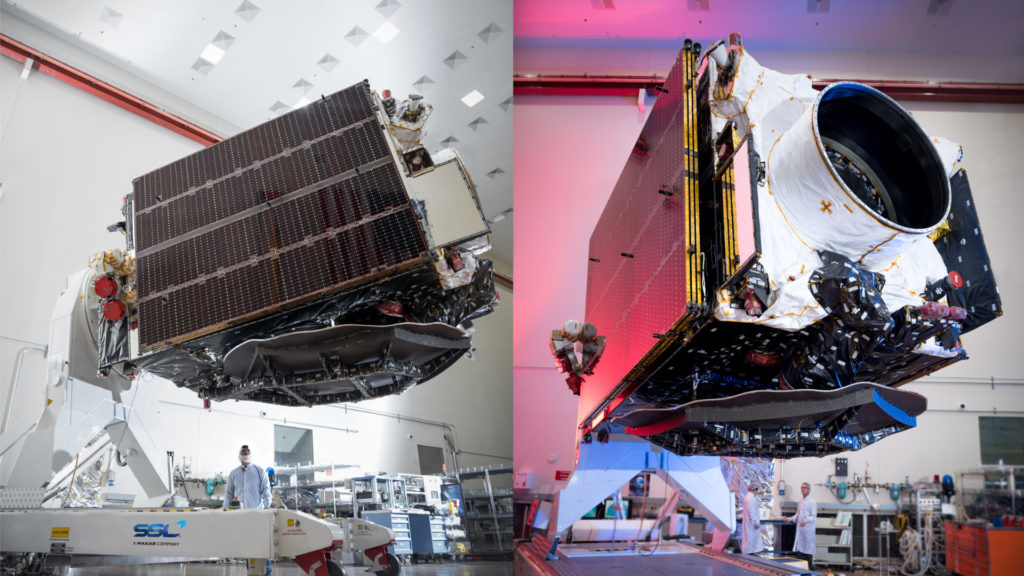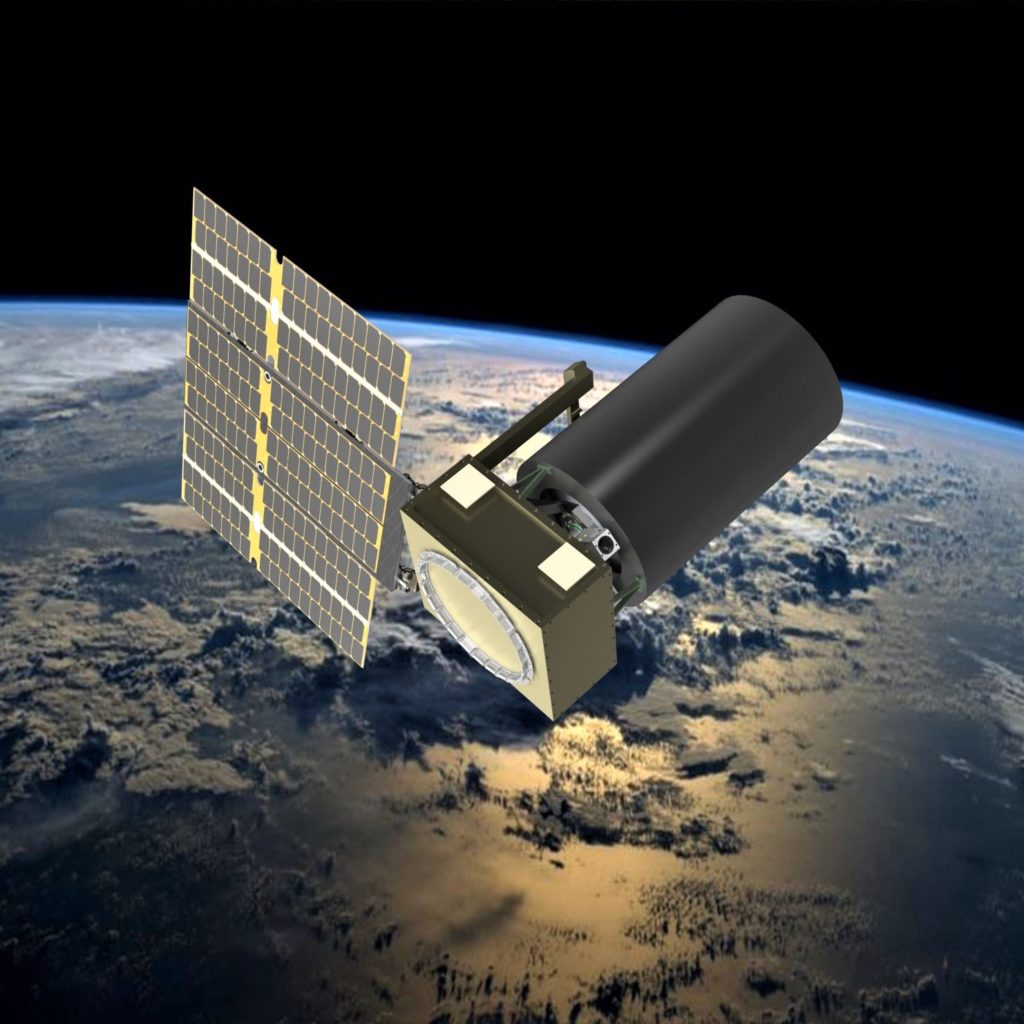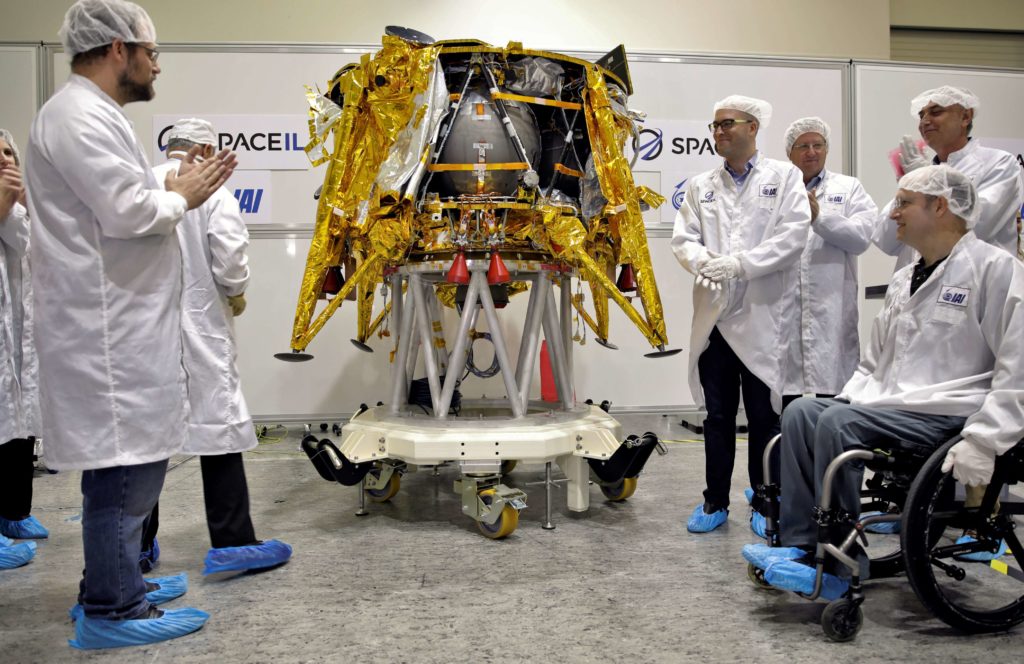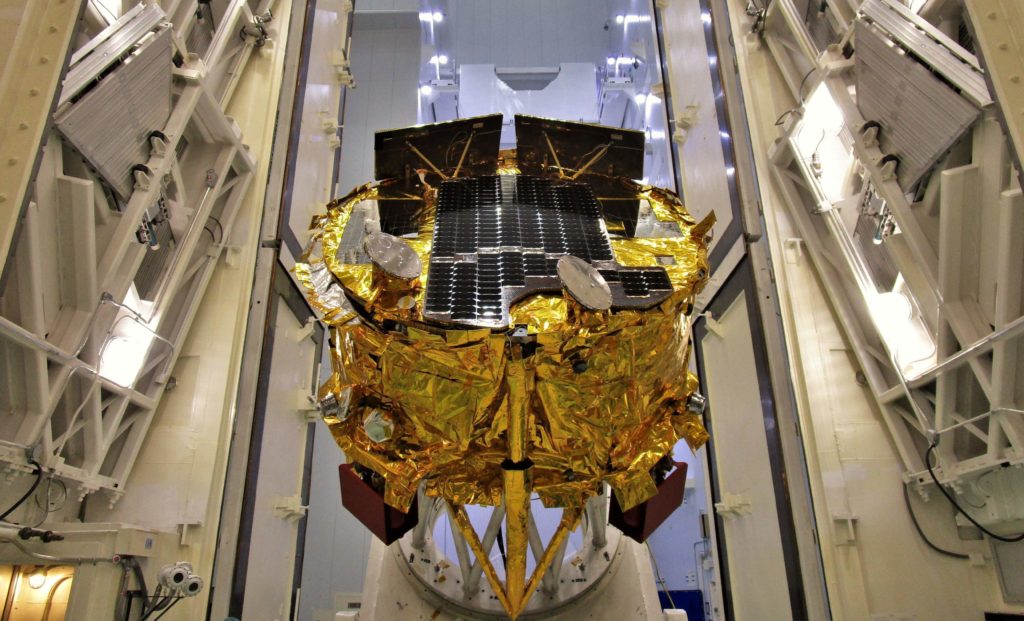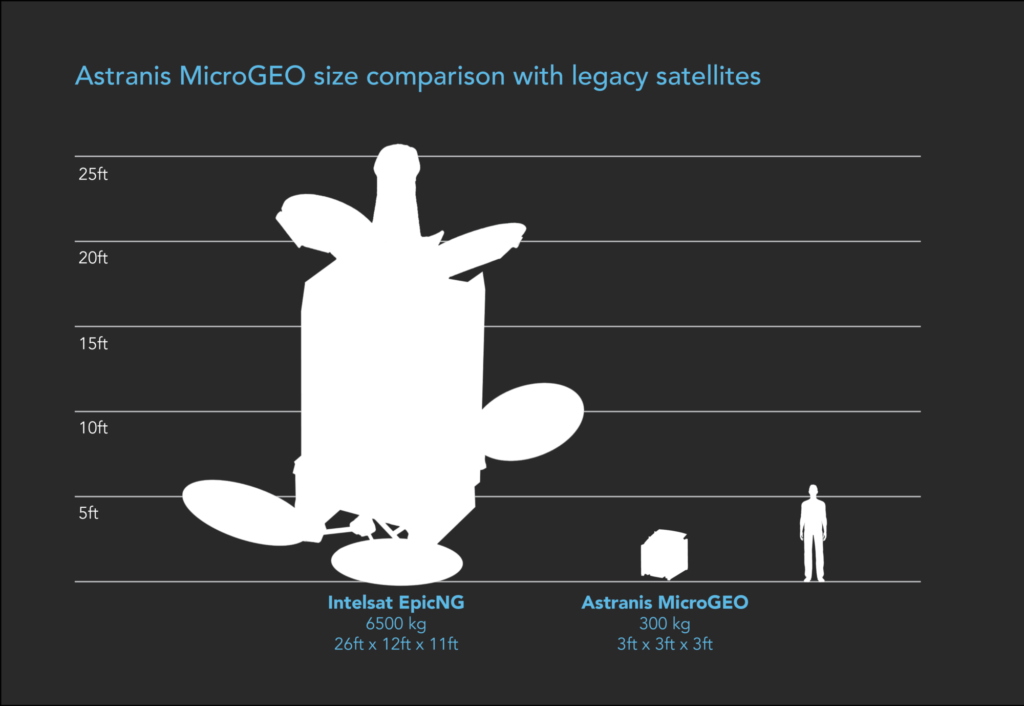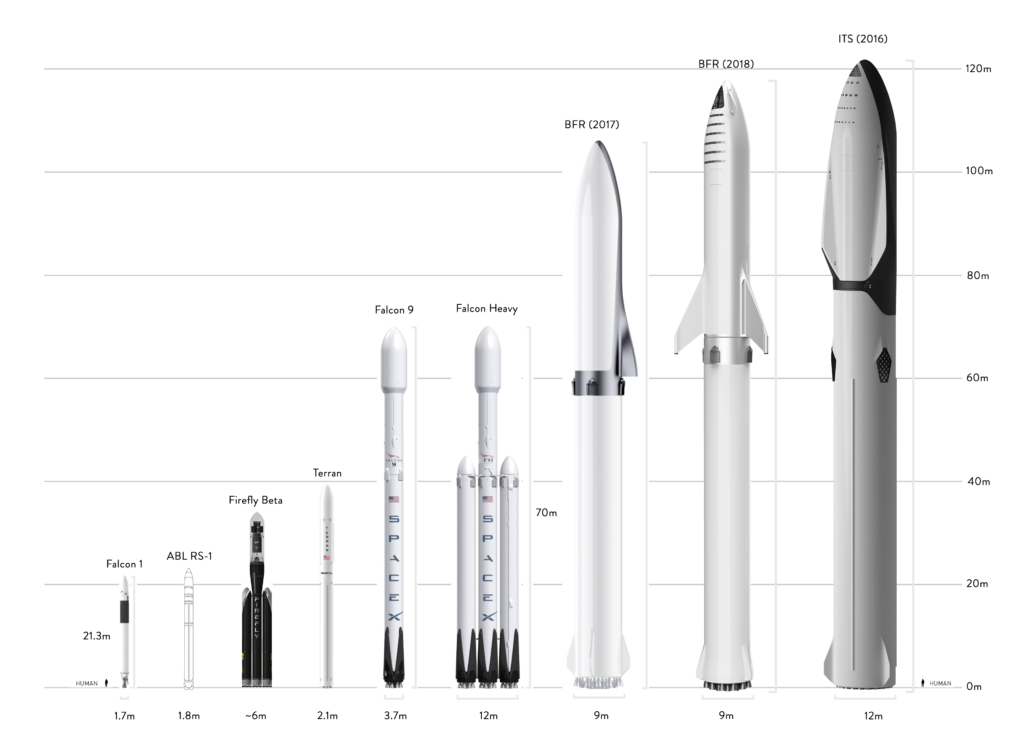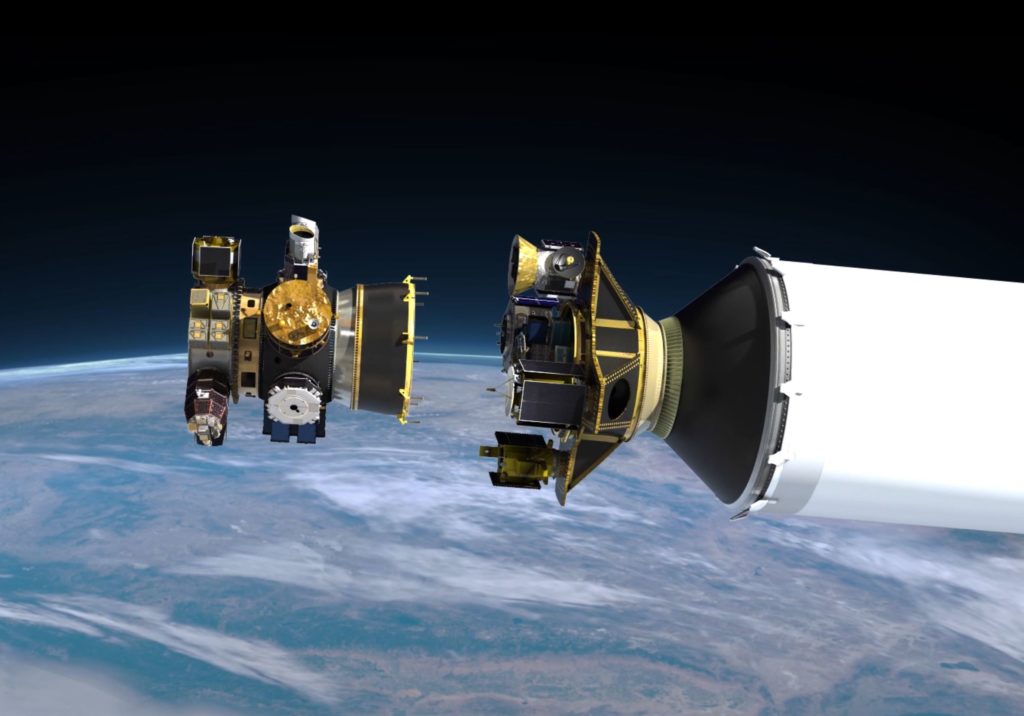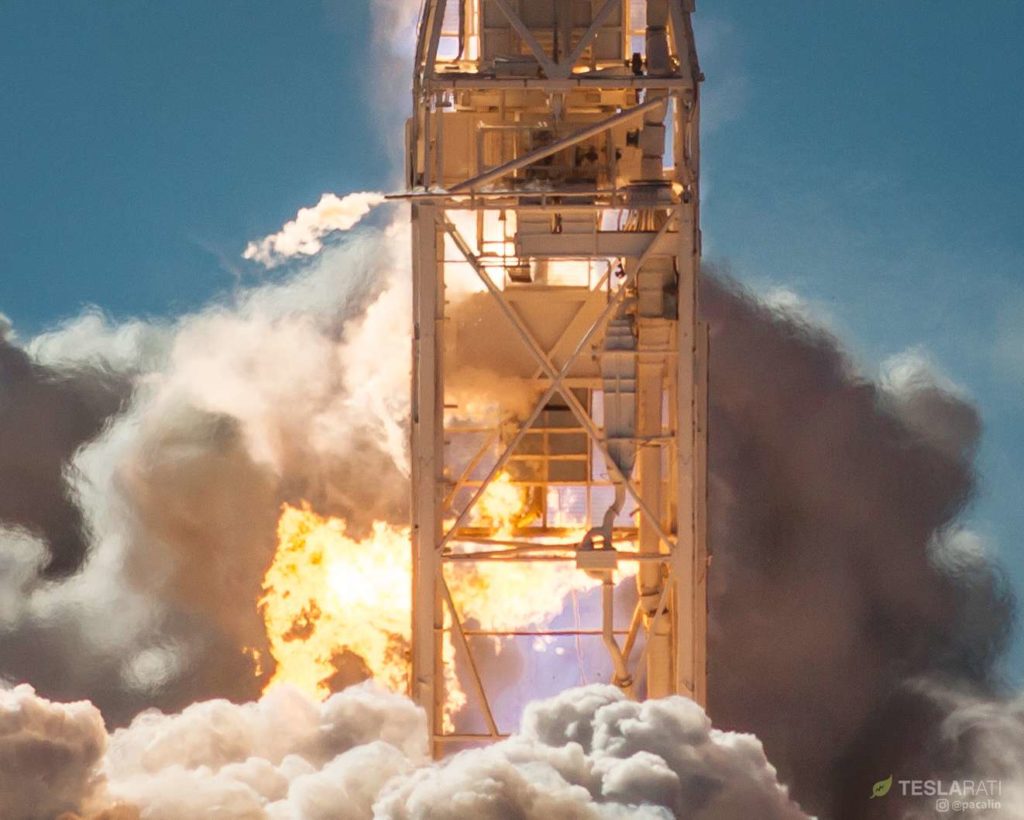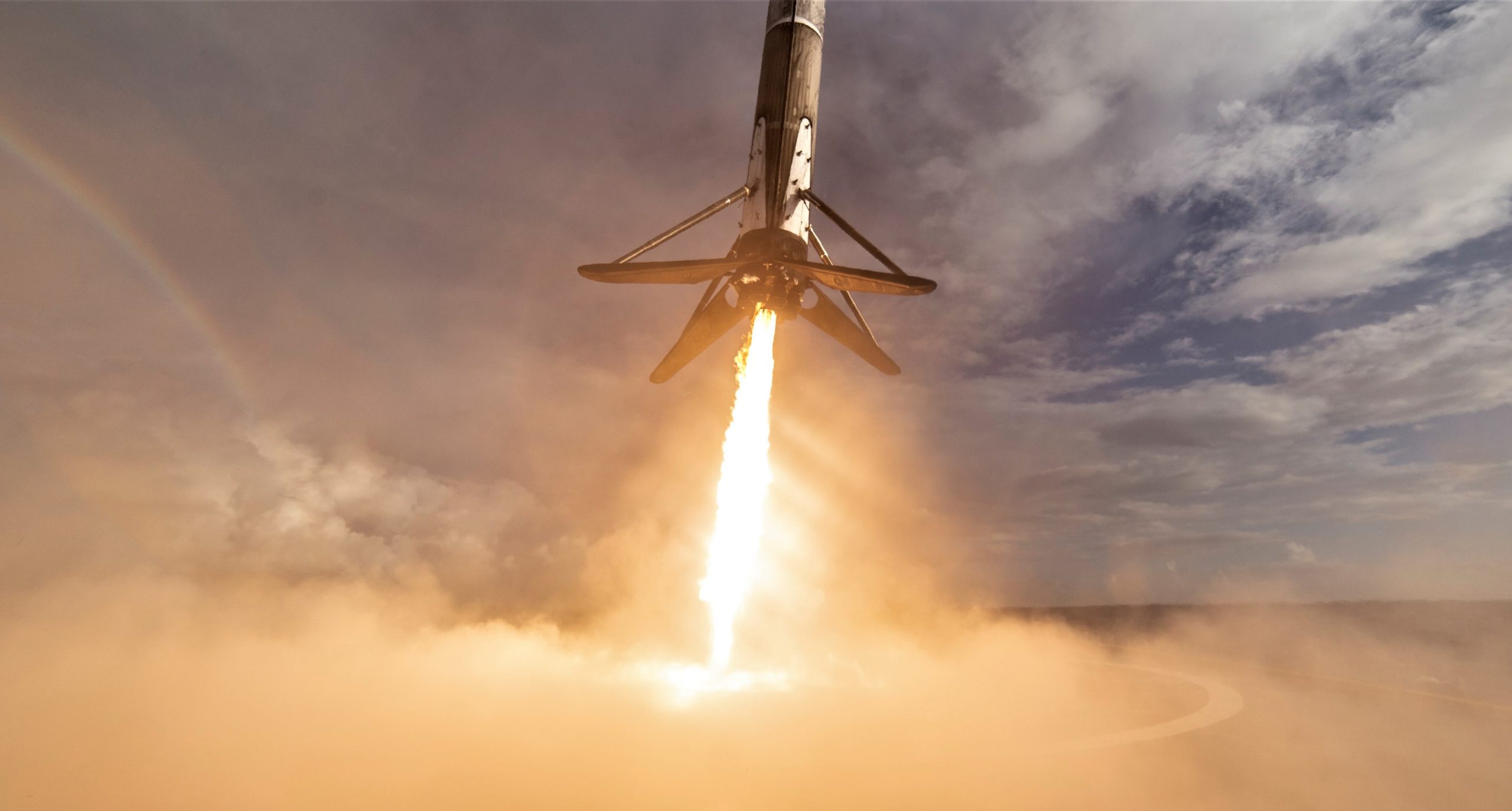
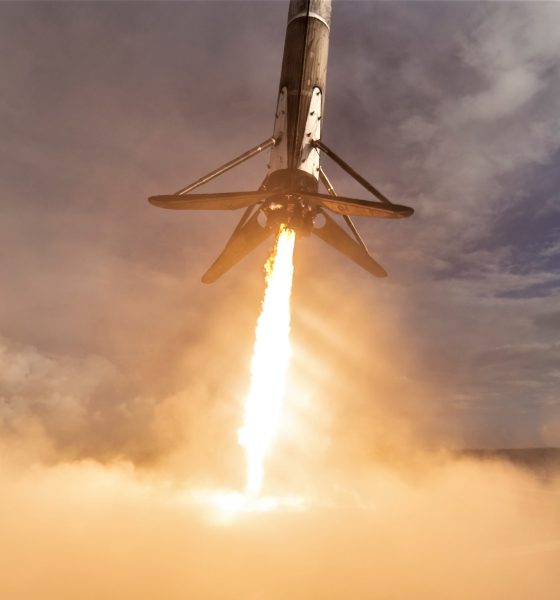
SpaceX
SpaceX test fires twice-flown Falcon 9 for world’s first commercial Moon mission
Likely to be the third orbital-class launch for the booster in question, SpaceX’s next launch – led by primary customer Pasifik Satelit Nusantara (PSN) – has the potential to lay claim to multiple major spaceflight “firsts”, ranging from the first time a twice-flown Falcon 9 has launched on the East Coast to the world’s first attempt to land a commercial spacecraft on another planetary body – the Moon, in this case.
SpaceX has completed the final critical test milestone of the mission’s flight-proven Falcon 9, filling the rocket with propellant and successfully static firing the booster on the evening of February 18th. According to SpaceX, all remains on schedule for a February 21st launch attempt from Cape Canaveral Air Force Station (CCAFS) Launch Complex 40 (LC-40), with liftoff currently targeted for 8:45 pm EDT (01:45 UTC).
Static fire test of Falcon 9 complete—targeting February 21 launch of Nusantara Satu from Pad 40 in Florida.
— SpaceX (@SpaceX) February 19, 2019
If all goes well, the launch of PSN satellite Nusantara Satu (formerly PSN-6; translation: “One Archipelago”) – carrying two copassenger spacecraft – could be an immensely significant moment for commercial spaceflight. Thanks to the support of rideshare provider Spaceflight Industries, those two passengers will be sent to high-energy geostationary orbits long relegated to dedicated launches of extremely large satellites, typically weighing multiple tons. While one could fairly argue that this is not the first time in history that a geostationary rideshare launch has occurred, it is almost certainly the first time that such a mission profile has been attempting for a commercial customer.
We are going to the moon! A 3D engine mount from RUAG Space will be the first 3D printed part on the moon. Our 3D part will support landing and lift off of Lunar Lander from @TeamSpaceIL. Congrats to our incredible engineers! pic.twitter.com/AbFZFD7GPB
— Peter Guggenbach (@PeterGuggenbach) February 11, 2019
In this case, that commercial entity is the Israeli company SpaceIL in support of the world’s first commercially-developed Moon lander, a ~600 kg (1300 lb) spacecraft known as Beresheet (Hebrew for “In the beginning”). Designed by SpaceIL and constructed by Israel Aerospace Industries (IAI), the craft has since been installed atop PSN-6 and encased in Falcon 9’s payload fairing along with one much smaller copassenger, an Air Force Research Laboratory-funded (AFRL) microsat known as “S5”. The latter spacecraft weighs roughly 60 kg (130 lb) and is an experiment designed to determine whether small satellites can be used in geostationary orbit (GEO), with S5 focusing on cataloging and tracking GEOsats.
- PSN-6, an SSL-built communications satellite weighing several thousand kilograms, arrived in Florida roughly 10 days ago. (SSL)
- The Air Force Research Lab’s S5 smallsat. (Blue Canyon)
- Beresheet is seen here prior to the spacecraft’s flight from Israel to Florida. (SpaceIL/IAI)
- After arriving in Florida, Spaceflight was tasked with integrating Beresheet with PSN-6. (SpaceIL/Spaceflight)
Spaceflight Industries aims for new market creation
Shepherded by rideshare industry leader Spaceflight, the PSN-6 rideshare – known by the company as GTO-1 – has the potential to open up a new and highly useful realm of spaceflight previously all but closed off to customers lacking tens of millions of dollars for launch costs. While it’s unclear how exactly Spaceflight worked with SSL and/or PSN to make it happen, the mission profile and its potential are both fascinating and complex.
“What we’re doing with [GTO-1] is really cool, cause this is a type of mission that hasn’t really been available [commercially] in the past – taking a ride all the way to GEO and then separating in GEO as an independent spacecraft . . . We’re really excited about testing the market and proving – really, making – a new market here with the GEO [and GTO] rideshare.” – Ryan Olcott, Spaceflight (Jan. 2019)
In a late-January interview with Spaceflight’s Mission Director Ryan Olcott, the senior manager was audibly excited about the future potential of Spaceflight’s new GTO (and GEO) offerings and the many ways that they could change the game for a number of companies and startups with far smaller but no less capable spacecraft. Including startups Astranis and Terran Orbital and industry stalwart SSL, interest in small geostationary satellites has never been higher, and a number of pathfinder missions in 2020 and 2021 – if successful or at least promising – could mark a paradigm shift for the geostationary satellite communications industry as a whole. Often sized perfectly (100-500 kg) for a handful of in-development smallsat launch vehicles like Relativity’s Terran, Firefly’s Beta, and ABL Space’s RS-1, it will likely be several years before those new rockets are capable of reliably supporting these much smaller launches, leaving rideshare missions as the only real route for interested customers until the early to mid 2020s.
- Astranis’ “MicroGEO” offering compared beside one of the largest geostationary satellite buses. (Astranis)
- The change in scale between ITS, BFR, and BFR 2018 is significant. (Teslarati)
- A render of Spaceflight’s SSO-A dispensers attached to Falcon 9’s second stage.
- Falcon 9 B1046 lifts off for the third time with Spaceflight’s SSO-A rideshare mission. (Pauline Acalin)
In the process of undertaking this milestone geostationary rideshare, Spaceflight had to design, build, and test custom hardware needed to protect the AFRL’s S5 spacecraft on its multi-week ridealong from geostationary transfer orbit to PSN-6’s geostationary orbit destination, as well as unique mounting hardware needed to load SpaceIL’s Beresheet spacecraft atop the main satellite host. In fact, GTO-1’s mission profile is impressively complex, requiring multiple mission-specific maneuvers and separation events to detach Beresheet shortly after the entourage separates from Falcon 9, carry S5 to a geostationary graveyard orbit (GEO + ~300 km) to separate Spaceflight’s custom hardware, return to a lower orbit to deploy the Air Force satellite, and finally insert PSN-6 into its final operational orbit.
“We actually have to open up our adapter system to allow the [AFRL S5] spacecraft to come out, so we have about a half-day time window that we’re aiming for where we will separate the top off of our cone adapter system and then drop [the orbit] back down a little bit [because we can’t drop that junk off in GEO – you have to use the GEO graveyard slot].” – Ryan Olcott, Spaceflight

“GTO is pretty cool because you can do all sorts of positive C3 missions [to] Lagrange points or just about [anywhere] in the solar system you want to go to … With SpaceIL, potentially in the future [Spaceflight will also] be able to partner with them to bring things to the Moon if they’ve got customers that want to bring payloads to the Moon.” – Ryan Olcott, Spaceflight
The fact that the first primary passenger (by weight) of GTO-1 is a mission as groundbreaking as the commercial Beresheet Moon lander is also by no means a coincidence according to Ostello, a feeling that was rapidly backed up by an agreement between IAI and European company OHB to potentially use Beresheet-derived landers to deliver European payloads to the Moon. Ostello expressed a similar interest and optimism a few weeks prior to that announcement. While not directly involving Spaceflight, the fact that IAI (Beresheet’s manufacturer) is interested in producing more landers for other customers essentially opens the door for Spaceflight or other commercial or governmental entities to purchase future landers for customer payloads or arrange their launch to the Moon.
Second time’s the third-time charm
Set to launch on an unspecified Falcon 9, process of elimination (i.e. which boosters are in Florida) implies that PSN-6/GTO-1 will feature either Falcon 9 booster B1047 or B1048, two flight-proven boosters with no know missions assigned that are also known to be in Cape Canaveral. B1047 last launched the Es’hail-2 satellite in mid-November, while B1048 completed its second launch (from California) in early October before shipping to Florida for unknown reasons. With B1048 situated in 39A’s hangar, the lack of any reports of a booster moving from 39A to 40 suggest that B1047 was the Falcon 9 that successfully conducted its third on-pad static fire last night.
Shortly after launch, the Falcon 9 booster will make its way to drone ship Of Course I Still Love You (OCISLY) – located ~650 km (400 mi) off the coast of Florida – for what will be the second time ever that SpaceX has successfully launched and landed the same Falcon 9 booster three times, following on the heels of B1046’s third launch last December. SpaceX fairing recovery vessel Mr. Steven also arrived at Port Canaveral last week after a nearly 8000 km (5000 mi) journey from Port of Los Angeles, raising the possibility of his first attempt at a fairing catch on the East Coast.

Check out Teslarati’s newsletters for prompt updates, on-the-ground perspectives, and unique glimpses of SpaceX’s rocket launch and recovery processes!

News
Tesla hints at Starlink integration with recent patent
“By employing polymer blends, some examples enable RF transmission from all the modules to satellites and other communication devices both inside and outside the vehicle.”

Tesla hinted at a potential Starlink internet terminal integration within its vehicles in a recent patent, which describes a vehicle roof assembly with integrated radio frequency (RF) transparency.
The patent, which is Pub. No U.S. 2025/0368267 describes a new vehicle roof that is made of RF-transparent polymer materials, allowing and “facilitating clear communication with external devices and satellites.”
Tesla believes that a new vehicle roof design, comprised of different materials than the standard metallic or glass elements used in cars today, would allow the company to integrate modern vehicular technologies, “particularly those requiring radio frequency transmission and reception.
Tesla has recently filed a US patent application on integrating RF transparent materials into the roof structure.
“facilitating clear communication with external devices and satellites”
Tesla fleet is getting @Starlink connectivity integration soon. LFG @Tesla @elonmusk… pic.twitter.com/bLa8YtPLd1
— Chansoo Byeon (@Chansoo) December 9, 2025
Instead of glass or metallic materials, Tesla says vehicles may benefit from high-strength polymer blends, such as Polycarbonate, Acrylonitrile Butadiene Styrene, or Acrylonitrile Styrene Acrylate.
These materials still provide ideal strength metrics for crashworthiness, stiffness for noise, vibration, and harshness control, and are compliant with head impact regulations.
They would also enable better performance with modern technologies, like internet terminals, which need an uninterrupted signal to satellites for maximum reception. Tesla writes in the patent:
“By employing polymer blends, some examples enable RF transmission from all the modules to satellites and other communication devices both inside and outside the vehicle.”

One of the challenges Tesla seems to be aware of with this type of roof design is the fact that it will still have to enable safety and keep that at the forefront of the design. As you can see in the illustration above, Tesla plans to use four layers to increase safety and rigidity, while also combating noise and vibration.
It notes in the patent that disclosed examples still meet the safety requirements outlined in the Federal Motor Vehicle Safety Standards (FMVSS).
Starlink integrated directly into Tesla vehicles would be a considerable advantage for owners. It would come with a handful of distinct advantages.
Initially, the inclusion of Starlink would completely eliminate cellular dead zones, something that is an issue, especially in rural areas. Starlink would provide connectivity in these remote regions and would ensure uninterrupted service during road trips and off-grid adventures.
It could also be a critical addition for Robotaxi, as it is crucial to have solid and reliable connectivity for remote monitoring and fleet management.
Starlink’s growing constellation, thanks to SpaceX’s routine and frequent launch schedule, will provide secure, stable, and reliable internet connectivity for Tesla vehicles.
Although many owners have already mounted Starlink Mini dishes under their glass roofs for a similar experience, it may be integrated directly into Teslas in the coming years, either as an upgrade or a standard feature.
Investor's Corner
SpaceX IPO is coming, CEO Elon Musk confirms
However, it appears Musk is ready for SpaceX to go public, as Ars Technica Senior Space Editor Eric Berger wrote an op-ed that indicated he thought SpaceX would go public soon. Musk replied, basically confirming it.

Elon Musk confirmed through a post on X that a SpaceX initial public offering (IPO) is on the way after hinting at it several times earlier this year.
It also comes one day after Bloomberg reported that SpaceX was aiming for a valuation of $1.5 trillion, adding that it wanted to raise $30 billion.
Musk has been transparent for most of the year that he wanted to try to figure out a way to get Tesla shareholders to invest in SpaceX, giving them access to the stock.
He has also recognized the issues of having a public stock, like litigation exposure, quarterly reporting pressures, and other inconveniences.
However, it appears Musk is ready for SpaceX to go public, as Ars Technica Senior Space Editor Eric Berger wrote an op-ed that indicated he thought SpaceX would go public soon.
Musk replied, basically confirming it:
As usual, Eric is accurate
— Elon Musk (@elonmusk) December 10, 2025
Berger believes the IPO would help support the need for $30 billion or more in capital needed to fund AI integration projects, such as space-based data centers and lunar satellite factories. Musk confirmed recently that SpaceX “will be doing” data centers in orbit.
AI appears to be a “key part” of SpaceX getting to Musk, Berger also wrote. When writing about whether or not Optimus is a viable project and product for the company, he says that none of that matters. Musk thinks it is, and that’s all that matters.
It seems like Musk has certainly mulled something this big for a very long time, and the idea of taking SpaceX public is not just likely; it is necessary for the company to get to Mars.
The details of when SpaceX will finally hit that public status are not known. Many of the reports that came out over the past few days indicate it would happen in 2026, so sooner rather than later.
But there are a lot of things on Musk’s plate early next year, especially with Cybercab production, the potential launch of Unsupervised Full Self-Driving, and the Roadster unveiling, all planned for Q1.
News
SpaceX reportedly mulling IPO, eyeing largest of all time: report
“I do want to try to figure out some way for Tesla shareholders to participate in SpaceX. I’ve been giving a lot of thought to how to give people access to SpaceX stock,” Musk said.

SpaceX is reportedly mulling an initial public offering, eyeing what would be the largest valuation at the time of availability of all time, a new report from Bloomberg said on Tuesday.
It is one of many reports involving one of Elon Musk’s companies and a massive market move, as this is not the first time we have seen reports of an IPO by SpaceX. Musk himself has also dispelled other reports in the past of a similar nature, including an xAI funding round.
SpaceX and Musk have yet to comment on the report. In the past, untrue reports were promptly replied to by the CEO; this has not yet gained any response, which is a good sign in terms of credibility.
However, he said just a few days ago that stories of this nature are inaccurate:
“There has been a lot of press claiming SpaceX is raising money at $800B, which is not accurate. SpaceX has been cash flow positive for many years and does periodic stock buybacks twice a year to provide liquidity for employees and investors. Valuation increments are a function of progress with Starship and Starlink and securing global direct-to-cell spectrum that greatly increases our addressable market. And one other thing that is arguably most significant by far.”
There has been a lot of press claiming @SpaceX is raising money at $800B, which is not accurate.
SpaceX has been cash flow positive for many years and does periodic stock buybacks twice a year to provide liquidity for employees and investors.
Valuation increments are a…
— Elon Musk (@elonmusk) December 6, 2025
Musk has discussed a potential IPO for SpaceX in recent months, as the November 6 shareholder meeting, as he commented on the “downsides” of having a public company, like litigation exposure, quarterly reporting pressures, and other inconveniences.
Nevertheless, Musk has also said he wants there to be a way for Tesla shareholders to get in on the action. At the meeting in early November, he said:
“I do want to try to figure out some way for Tesla shareholders to participate in SpaceX. I’ve been giving a lot of thought to how to give people access to SpaceX stock.”
Additionally, he added:
“Maybe at some point., SpaceX should become a public company despite all the downsides of being public.”
Musk has been historically reluctant to take SpaceX public, at times stating it could become a barrier to colonizing Mars. That does not mean it will not happen.
Bloomberg’s report cites multiple unidentified sources who are familiar with the matter. They indicate to the publication that SpaceX wants to go public in mid-to-late 2026, and it wants to raise $30 billion at a valuation of around $1.5 trillion.
This is not the first time SpaceX has discussed an IPO; we reported on it nine years ago. We hope it is true, as the community has spoken for a long time about having access to SpaceX stock. Legendary investor Ron Baron is one of the lucky few to be a SpaceX investor, and said it, along with Tesla, is a “lifetime investment.”
Tesla bull Ron Baron reveals $100M SpaceX investment, sees 3-5x return on TSLA
The primary driver of SpaceX’s value is Starlink, the company’s satellite internet service. Starlink contributes 60-70 percent of SpaceX’s revenue, meaning it is the primary value engine. Launch services, like Falcon 9 contracts, and the development of Starship, also play supporting roles.
